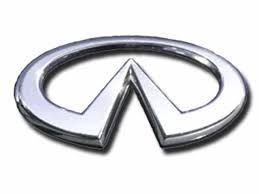Q45t V8-4130cc 4.1L DOHC MFI (VH41) (1997)
/Page-2201003.png)
Select a 2' x 2' test section to perform the following Contamination Test Removal.
C. Rewash
Rewash with detergent and water solution, keeping it wet for 4 - 5 minutes. To avoid scratching the finish, do not rub, gently move the solution around
with light pressure. Do not allow the solution to dry before rinsing. Use, clean warm water and a clean terry cloth towel. Frequently rinse off the terry
cloth towel to avoid scratches from entrapped dirt. Replace the towel with a clean one once it becomes soiled. Rinse with a spray of clean water. Repeat
up to four times.
D. Clean
Clean with Infiniti Bug and Tar remover using a clean terry cloth towel and gentle pressure. Repeat up to four times.
E. Apply Finish Kare
Apply Finish Kare to remove iron particles and acids. See procedure below:
CAUTION:
Attempting to buff iron particles will cause severe scratching.
1.
Apply Finish Kare # 1119, solution, keeping it wet for 4-5 minutes. To avoid scratching the finish, do not rub, gently move the solution around
with light pressure. Do not allow the solution to dry before rinsing.
2.
After the wash and rinse, gently dry the contaminated surfaces with the terry cloth towels to remove the majority of the water. Use gentle pressure
on the towel to avoid scratching the paint with any loosened iron particles.
3.
Apply Finish Kare # 883 directly from the bottle using the applicator provided. Keep the affected areas wet for 5 minutes and allow the solution to
lift the particles. Agitate gently, but do not rub as this will scratch the top coat or clear coat of paint. Reapply # 883 to spots which start to dry
before rinsing.
CAUTION:
Do not exceed the 5 minute soak time as this solution may damage the paint or trim.
4.
Rinse thoroughly with tap water, dry and inspect the surface.
5.
Reapply # 883 as often as needed to remove more difficult spots.
6.
When all iron particles are removed, wash with Finish Kare # 118SC (Neutralizer and Shampoo) and rinse thoroughly. Gently dry with a fresh
towel. Do not use towels used in the above steps, as they may have iron particles in the nap and could scratch the clear coat.
F. Inspect For Damage Severity
After washing and iron particle/chemical removal are performed on the test section, inspect the surface to determine the severity of damage. Levels 2 and
3 are determined using abrasive removal on test sections on each affected panel.
Examine the vehicle in both strong sunlight and/or indoor fluorescent lighting (inspection is easier with a hand held 500 watt halogen lamp and a hand
held fluorescent lamp) to identify which type of contamination may be affecting the vehicle. Magnified viewing of spots is easily done with an 8X and
30X illuminated magnifier form Radio Shack (catalog no. 63-851).
Level 1 No damage, the contamination did not penetrate the paint surface and washed off using the detergent and water and the iron particle remover.
Level 2 Minor damage, the contamination did not penetrate more than 0.5 mil of the top coat or clear coat. Abrasive cleaning will resolve.
Level 3 Substantial damage, the contamination penetrated more than 0.5 mil of the top coat or color coat. Re-color and clear coat is necessary.
G. Abrasive Cleaning
IMPORTANT:
All iron particles and acids must be removed and the surface neutralized with the above procedure before proceeding. Iron particles and acids which
remain will not be fully removed by abrasive cleaning. Small amounts of contamination will wick moisture into the clear coat or through a
re-color/clear coat and cause blistering.
The goal of abrasive cleaning is to remove the damaged layer of clear coat (up to 0.5 mil in thickness) using the least abrasive process. The steps below
demonstrate the sequence of operations to use on the test section to identify the severity of damage and the repair needed.
1. Measure paint film thickness.
2. Polish and evaluate.
If OK Polish all affected surfaces.
If NG go to step 3.
Also determine film thickness removed.
